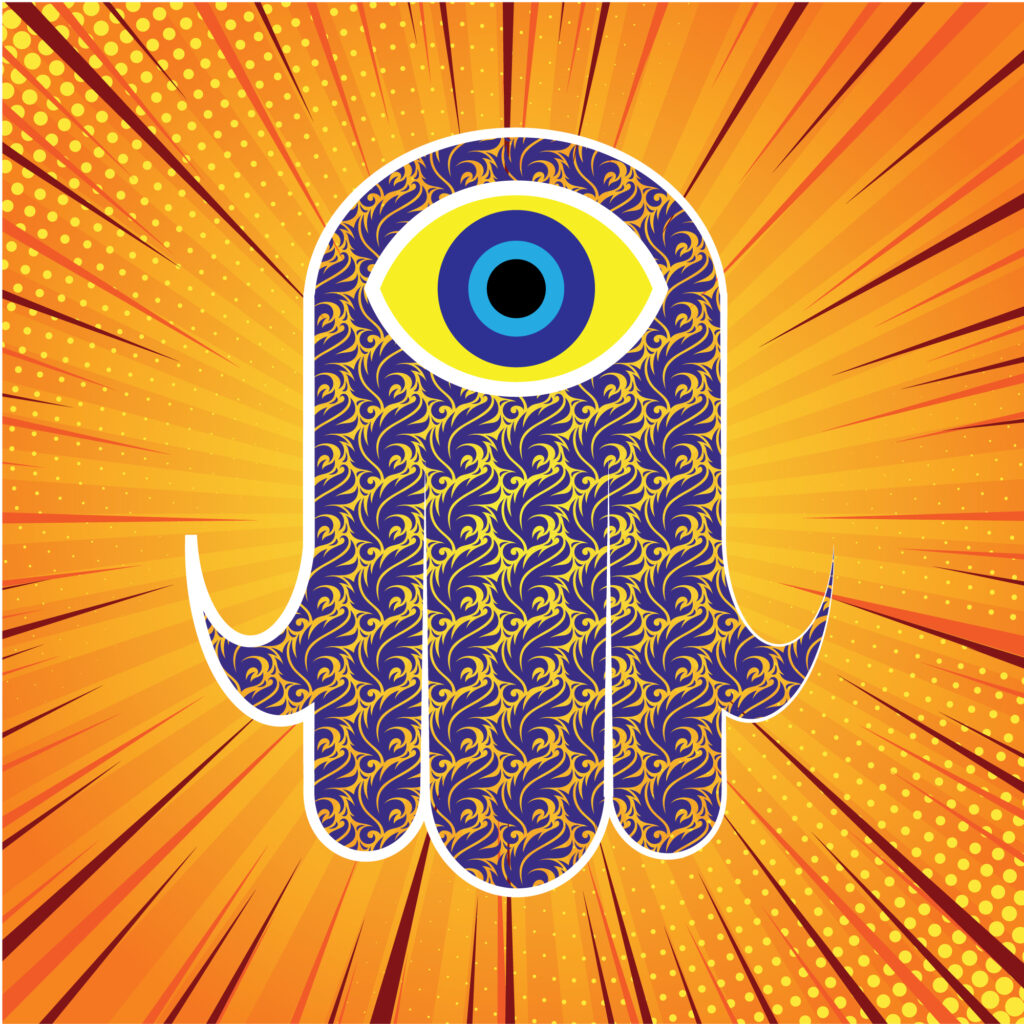
The story of the Khmissa or Fatma hand: An Ancient Symbol of Protection in North Africa and the Middle East
The story of the Khmissa or Fatma hand
The Khamsa, known in Arabic as خمسه and in Hebrew as חמסה, is a powerful and enduring symbol representing a hand. Sometimes spelled as Khmissa or Khomsa, and also called Afust in Grande Kabylie (Kabyle: ⴰⴼⵓⵙⵜ), the Hand of Fatima, Hand of Myriam, or Hand of Fatma, this amulet is deeply rooted in the cultures of North Africa and the Middle East. It is primarily used as a talisman to protect against the evil eye.
the Khmissa or Fatma hand: Origins and Meaning
The term “Khamsa” means “five” in both Arabic and Hebrew, symbolizing the five fingers of the hand. This number holds significant importance in various numeral systems, particularly the quinary system. In Amazigh languages, the term “Afust” directly translates to “hand,” further emphasizing its cultural significance.
The Khamsa’s origins are traced back to the ancient Punic and Amazigh deity Tanit, who was a symbol of fertility. Historical evidence suggests that the Khamsa predates the advent of Judaism and Islam, with its use in polytheistic religions.
the Khmissa or Fatma hand: Symbolism and Cultural Significance
The Khamsa is not only a symbol deeply embedded in Amazigh customs and beliefs but also one that appears in rock art sites worldwide. These representations can be either painted or engraved. Over time, the Khamsa’s symbolism has been adapted by various cultures and religions. For Jews, it is associated with the five books of the Torah, while for Muslims, it symbolizes the five pillars of Islam or the five members of the Prophet’s family (Ahl al-Kisa).
Despite these religious associations, some Muslims view the Khamsa purely as a superstition, believing that only God offers protection, and therefore considering the Khamsa as potentially representing shirk, or the sin of idolatry.
Variations and Usage
The orientation of the fingers in Khamsa depictions—pointing up or down—varies according to personal taste or decorative style. This flexibility in representation highlights its evolving symbolism through different historical periods.
Historical Background
The Khamsa’s design is believed to have originated from the hand of Tanit, a deity revered in the Punic civilization for fertility. This hand symbol often appeared on funerary steles from the 5th century BCE onwards, intended to protect the deceased and ward off the evil eye. Over time, monotheistic religions such as Judaism and Islam adopted the Khamsa, with its roots firmly planted in these ancient traditions.
Modern Presence in North Africa
Today, the Khamsa is ubiquitous in North Africa. It is sold in various forms across Tunisia, Algeria, Morocco, Libya, and Egypt. Often painted on house facades and crafted into turquoise ceramic plaques, the Khamsa is a common sight in modern Tunisia and Egypt.
Importantly, the Khamsa is a cultural symbol of North Africa, transcending religious affiliations. It appears in logos of various organizations, including the 1st Regiment of Tirailleurs in the French army and the Cercle Algérianiste, an association that preserves the memory of French Algerians.
Conclusion
The Khamsa stands as a testament to the rich cultural tapestry of North Africa and the Middle East. Whether as an amulet, talisman, or decorative piece, it continues to be a cherished symbol of protection and cultural identity. The Khamsa’s journey from ancient civilizations to modern societies highlights its enduring appeal and significance across different cultures and religions.

Explore More Art Like This
Art has the power to connect us to deeper emotions and universal truths. If you found yourself captivated by this illustration, there is so much more to discover. Dive into the world of Morocco and explore a myriad of other enchanting scenes that evoke beauty, peace, and connection. Follow us on our social media channels to stay updated with our latest creations and join a community of art lovers who appreciate the elegance of simplicity.
